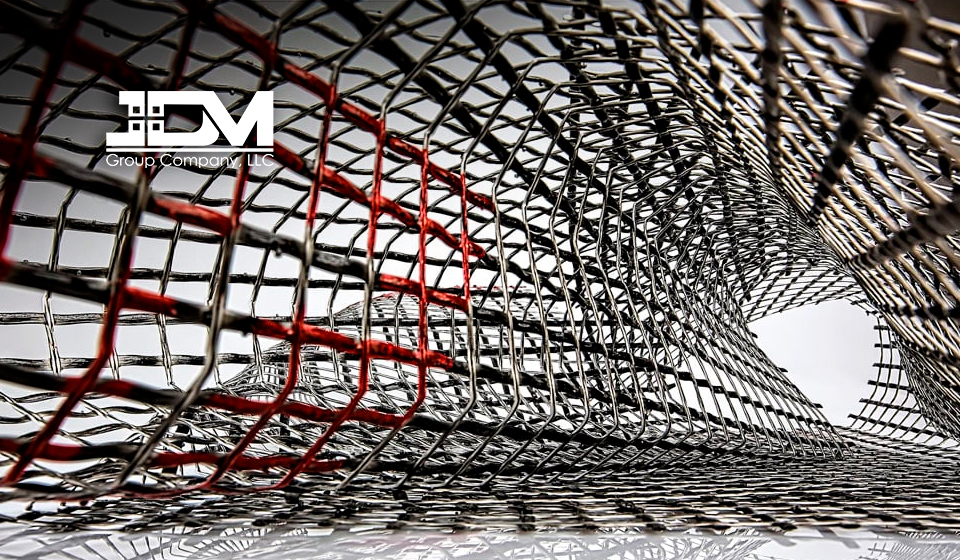The future of technology in construction

The 5 best constructions of Ing. Civil Engineering
March 14, 2021
What is Intelligent Transportation System?
March 14, 20211. Artificial Intelligence (AI) for Construction
AI can create tremendous value in construction. First, start with an extensive, high-quality database of past results and then develop machine learning processes to make predictions. Our favorite example is using AI to create new construction schedules by exploring thousands or millions of scenarios. Image recognition is another way to use AI in construction. You can use AI to analyze photos of materials on the job site and identify materials at risk, or watch for high-risk trends in worker behavior.
If you’re looking for AI to use right now, keep in mind that it may have a different name. Some companies prefer to use the term “machine learning” or “algorithms” to describe the same capability.
2. The Connected Job Site
The connected job site is already here. We predict that companies will work much harder to deploy this technology. Efforts to eliminate paper forms will pick up in 2020. As a result, construction companies will need to use digital forms to deliver information to others on the job site.
By fully leveraging the connected job site, construction managers benefit in two ways. First, they receive higher-quality information from the site, without needing to travel every day. That means less wasted travel time and faster decision-making on changes. For employees, it means less frustration waiting for the head office to respond to you.
Use Device Magic’s Enterprise Solution to bring the power of the connected job site to your team right now. This is a construction technology that’s ready for use right now and wouldn’t break the bank.
3. Augmented Reality (AR)
AR first became well known to the public through gaming and gadgets. However, AR is now coming to the construction site. Picture the following scenario: a construction worker wears Google Glass and receives updates on work.
For instance, AR can deliver relevant safety warnings when a worker becomes tired and needs rest. AR can also provide data such as temperature, pressure, and other data points when requested, so workers can proactively identify problems.
4. Building Analytics and the Internet of Things (IoT)
Building owners want more analytics and IoT capabilities in their buildings. As a result, we predict that the construction industry will develop greater IoT expertise. Specifically, installing, testing, and improving network-connected sensors in buildings will become more popular. This will give building owners the capacity to manage heating, cooling, security, and energy usage more efficiently. In the short run, consider outsourcing IoT work to specialized firms. To stay competitive in the long term, you’ll need to develop this capacity internally.
5. Modular Construction
The days of building homes from scratch are coming to an end. Instead, we predict that modular construction will become more popular. This prediction is enabled by the increasing sophistication and affordability of 3D printers. Speed is another critical factor. In an age of same-day Amazon delivery, customer patience for long construction schedules is diminishing.
How important is the modular construction niche? A 2018 market research report found that it’s already worth more than $100 billion annually. The category is also expected to grow at over 6% annually from 2018 to 2023.
6. Exoskeletons for Construction Workers
Compared to our other predictions, this one is a bit more “out there.” However, these devices do exist, and there’s interesting potential. Just think about “wearable devices” writ large, and you have an exoskeleton. These devices help construction in two ways. First, they increase worker safety by reducing exposure to hazards on the job site (i.e., workers can avoid touching hazards directly). Second, construction workers can access increased strength.
7. Autonomous Vehicles
In large-scale construction sites such as resorts, mines, and commercial properties, it’s difficult to get around efficiently. That’s why we’re going to see the rise of autonomous vehicles, also known as self-driving cars. Unlike self-driving cars on public roads, construction self-driving cars will become more popular because they have a smaller environment to operate in.
Mining company Rio Tinto has already started using autonomous vehicles in some of its mines. Such vehicles are a good way to make the most of limited construction personnel. These vehicles are also an excellent way to increase efficiency since these vehicles don’t rest.
8. 3D Printing
3D Printing is transforming the construction industry. Just a few years ago, this innovative technology was used to help design and construct two bridges. Now, construction companies all over the world are using 3D printing to help them complete projects like never before.
Traditionally, contractors could only make so many changes to a wood/plastic model before they had to create an entirely new model. Now, 3D printing makes it easy for contractors to adjust their plans without having to start over. 3D printing can also help to create curved designs, whereas plastic and wooden models are limited to straight lines.
Even more fascinating, 3D printing is now being used to complete full-scale projects as well. Beyond modeling applications, builders can 3D print parts and components to be used in the actual construction of projects!
9. Rise of Eco-Friendly Materials
Contractors and builders are more intentional than ever about using eco-friendly materials in their construction projects. Not every material marketed as “green” is actually eco-friendly, so builders and contractors need to know precisely what they’re using and how the products they choose impact their carbon footprint.
Instead of using new timber for a construction project and cutting down new trees, consider using salvaged or reclaimed wood that comes from trees that have already been cut down. The same concept applies to steel. Producing steel requires a lot of energy, but using recycled steel for a construction project can produce the same results while using significantly fewer resources.
Other ways to include eco-friendly materials in your next construction project include:
- For Flooring: Bamboo, Cork, and salvaged wood planks are sustainable options for flooring. Linoleum, recycled rubber, and recycled tiles offer a unique aesthetic with a reduced carbon footprint as well.
- For Paint: Paints that have either zero VOCs (Volatile Organic Compounds) or low-VOCs are what you should be looking for when sourcing eco-friendly construction materials. Natural, organic paints and non-toxic stains and sealers are also a “greener” way to add color to a room.
- For Walls & Ceiling: Recycled content drywall can go a long way to reduce waste. You can find drywall containing up to 80% recycled materials. When it comes to framing, look for lumber with an FSC (Forest Stewardship Council) certification as eco-friendly.
- For Countertops: Consider using recycled glass or paper composite slabs for countertop finishing.
10. Robotics
Robots are changing the construction industry by performing automated tasks quickly and safely. They are already used in a range of construction activities today, including brick laying, painting, loading, and more—and their use is sure to become even more prevalent in the future.
The use of robots on a construction site protects workers from dangerous environments, reduces injuries, and can be used to complete work during labor shortages. While the construction industry will always require manual labor, innovative robotics technologies can help speed up the process, reduce delays, and improve productivity across many areas.
11. Innovative Materials
The construction industry is constantly changing and improving. New methods, materials, and technologies help builders and contractors do their jobs quicker, faster, and safer while simultaneously benefitting the consumer experience.
Some of the most innovative building materials that are transforming the construction industry include:
- Self-healing concrete. This incredible concrete uses built-in sodium silica capsules that produce calcite to repair cracks. The “bio concrete” is mixed with a healing agent. Once the concrete cracks and water gets in, the healing agent dissolves and becomes active, filling in the cracks automatically!
- Carbon nanotubes. Scientists have developed carbon tubes with a thickness of 1 nanometer (one-billionth of a meter). Boasting the highest strength-to-weight ratio of any material on Earth today, these nanotubes can be used in combination with a range of other materials to significantly enhance their durability and strength.
- Transparent aluminum. Imagine a material with the strength and malleability of metal that features the transparency and allure of glass. That’s exactly what transparent aluminum provides. Contractors can use this futuristic material to build glassy structures with less support required than with traditional glass structures.
- Aerogel insulation.Aerogel is among the least dense materials on the planet, only 15x heavier than air. It is a foam-like substance that features an extremely porous structure. That porousness makes it very difficult for heat to travel through it, so it has outstanding insulating properties—even double or triple that of fiberglass or foam insulation.
- And more. There are new materials for construction being developed every day. The possibilities for the future are truly exciting!
Step into the Future with Device Magic
Device Magic is a mobile forms application used by thousands of organizations across the globe. From daily reports and safety inspections to work orders, assessments, time sheets, and more, we make it easy to create custom forms to meet your needs, submit and store data from anywhere, and gain key insight with analytics and reporting.



